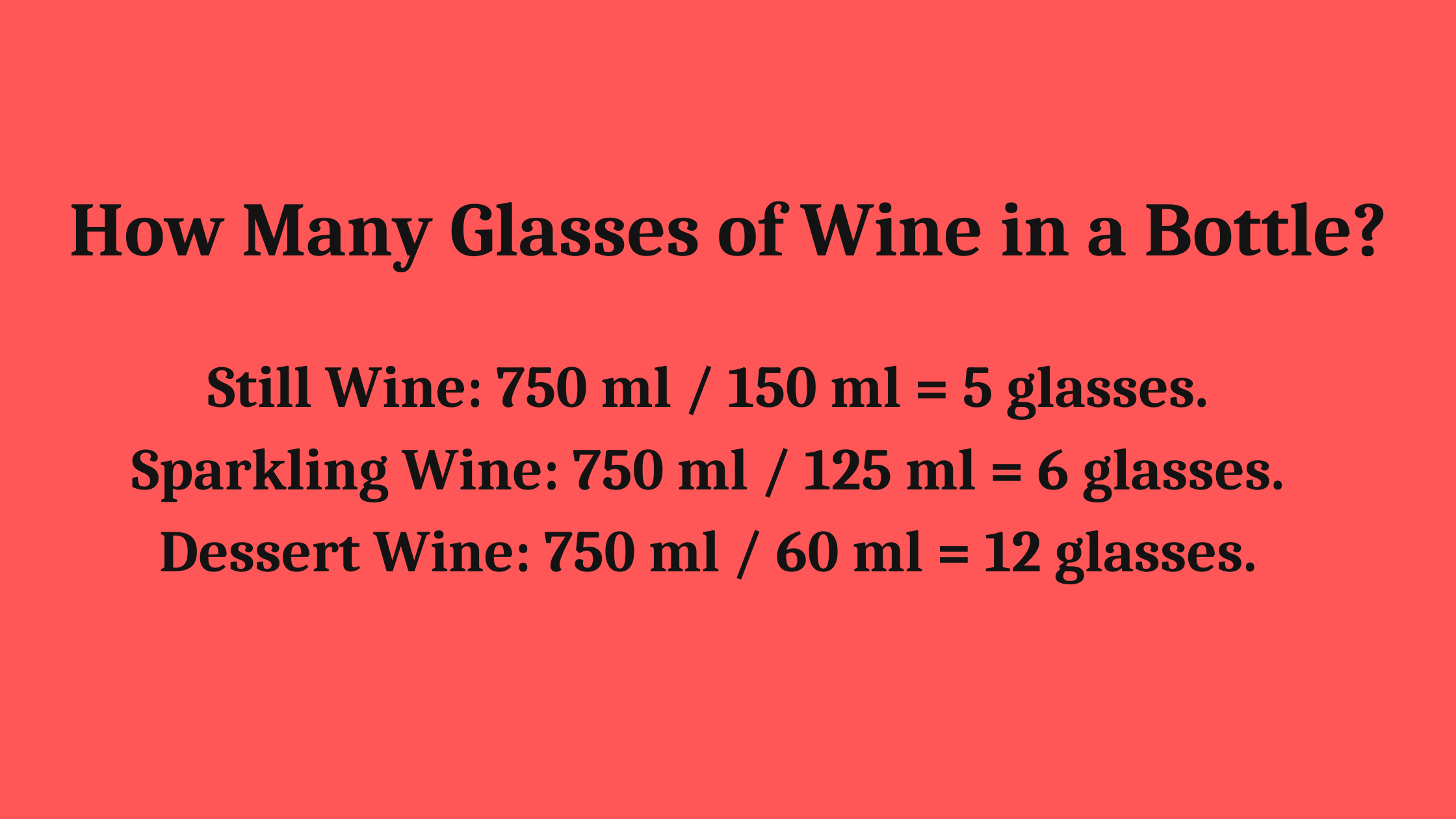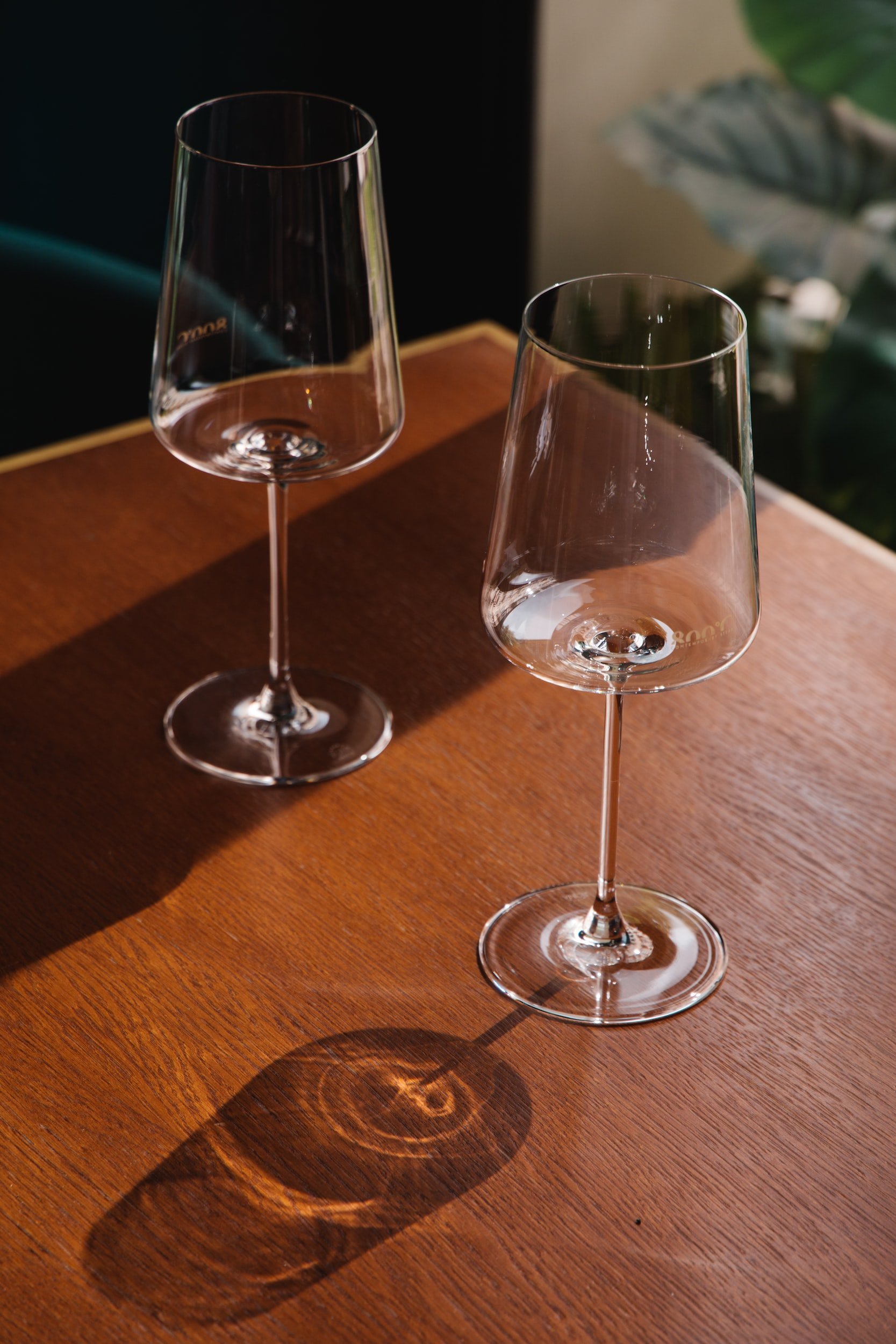How Many Glasses of Wine in a Bottle?
Have you ever found yourself wondering how many glasses you can pour from a single bottle of wine? Whether you're hosting a dinner party, planning a wedding, or simply enjoying a quiet evening at home, knowing the number of servings in a wine bottle can be quite handy.
In this article, we'll explore the different wine bottle sizes, standard serving sizes, and how many glasses you can expect from each bottle type.
Let's dive in!
Standard Wine Bottle Sizes and Their Capacities
Wine bottles come in a range of sizes, but the most common is the 750 ml bottle. This size is the industry standard for most types of wine.
Standard 750 ml Wine Bottle
The standard wine bottle contains 750 ml of wine.
This size is typical for still wines, sparkling wines, and many dessert wines.
Other Common Bottle Sizes: Magnum, Jeroboam, and More
Magnum: 1.5 liters, equivalent to two standard bottles.
Jeroboam: 3 liters, equivalent to four standard bottles.
Other larger bottles include the Rehoboam (4.5 L), Methuselah (6 L), Salmanazar (9 L), and Balthazar (12 L).
How Many Glasses of Wine in a Standard 750 ml Bottle?
The number of glasses in a bottle depends on the type of wine and the standard serving size.
Serving Sizes for Different Types of Wine
Still Wines: Standard serving is 150 ml.
Sparkling Wines: Standard serving is 125 ml.
Dessert and Fortified Wines: Standard serving is 60 ml.
Breakdown of Wine Servings with Examples
Still Wine: 750 ml / 150 ml = 5 glasses.
Sparkling Wine: 750 ml / 125 ml = 6 glasses.
Dessert Wine: 750 ml / 60 ml = 12 glasses.
Different Types of Wine and Their Serving Sizes
Still Wines (150 ml Per Glass)
Still wines, including red, white, and rosé, are typically served in 150 ml pours. In a standard 750 ml bottle:
750 ml / 150 ml = 5 glasses.
Sparkling Wines (125 ml Per Glass)
Sparkling wines like Champagne, Prosecco, and Cava are usually poured into smaller glasses to maintain the bubbles:
750 ml / 125 ml = 6 glasses.
Dessert and Fortified Wines (60 ml Per Glass)
Dessert and fortified wines like Port and Sherry are richer and more concentrated, so they’re served in smaller portions:
750 ml / 60 ml = 12 glasses.
Sparkling Wine Bottles and Glass Counts
Standard 750 ml Sparkling Wine
Standard bottle: 6 glasses (125 ml servings).
Magnum (1.5 L) and Jeroboam (3 L) Champagne Bottles
Magnum: 1.5 liters / 125 ml = 12 glasses.
Jeroboam: 3 liters / 125 ml = 24 glasses.
Serving Wine at Hotels and Restaurants
Hotels and restaurants often have specific standards for wine servings, aiming to balance guest satisfaction and cost-efficiency.
Hotel Wine Serving Practices
Sparkling Wine: 125 ml.
Still Wine: 150 ml.
Dessert Wine: 60 ml.
Pouring Standards and Etiquette
Proper wine serving not only enhances the dining experience but also ensures that the wine is served in the best possible condition.
How Bottle Sizes Impact Wine Experience
Flavor Evolution in Larger Bottles
Larger bottles, such as magnums, allow wine to age more gracefully, often resulting in a richer and more complex flavor profile.
Cost and Aesthetic Considerations
Magnums and larger bottles are not only aesthetically impressive but can also be more cost-effective per serving at larger gatherings.
Calculating the Number of Glasses for Various Bottle Sizes
The Math Behind Serving Sizes
To calculate the number of glasses in any bottle size, divide the bottle's volume by the serving size.
For example:
Magnum (1.5 L) of Still Wine: 1500 ml / 150 ml = 10 glasses.
7.2 Examples for Quick Reference
Jeroboam (3 L) of Sparkling Wine: 3000 ml / 125 ml = 24 glasses.
Half Bottle (375 ml) of Dessert Wine: 375 ml / 60 ml = 6 glasses.
Common Wine Bottles and Their Glass Counts
Half Bottle (375 ml)
Still Wine: 375 ml / 150 ml = 2.5 glasses.
Sparkling Wine: 375 ml / 125 ml = 3 glasses.
Magnum (1.5 L)
Still Wine: 1.5 L / 150 ml = 10 glasses.
Jeroboam (3 L)
Sparkling Wine: 3 L / 125 ml = 24 glasses.
Special Wine Bottles and Unique Experiences
Larger wine bottles like magnums and jeroboams are often used for celebrations, as they make a striking impression.
9.1 Larger Bottles and Celebration Wines
Jeroboam of Champagne: Perfect for large gatherings and offers an extended drinking experience due to the larger quantity.
9.2 Serving Tips for Special Occasions
Ensure proper chilling and use of the correct glassware to enhance the experience, especially with sparkling wines.
Tips for Wine Serving at Home
Using Proper Glassware
Using the right glassware can enhance the flavor and aroma of the wine.
Storing and Preserving Open Bottles
To preserve leftover wine, use a wine stopper or vacuum pump to limit oxidation.
Conclusion
Knowing how many glasses are in a bottle of wine helps with planning and enhances the overall wine experience. Whether you're enjoying a standard 750 ml bottle or celebrating with a magnum, understanding serving sizes ensures you get the most out of every pour.




